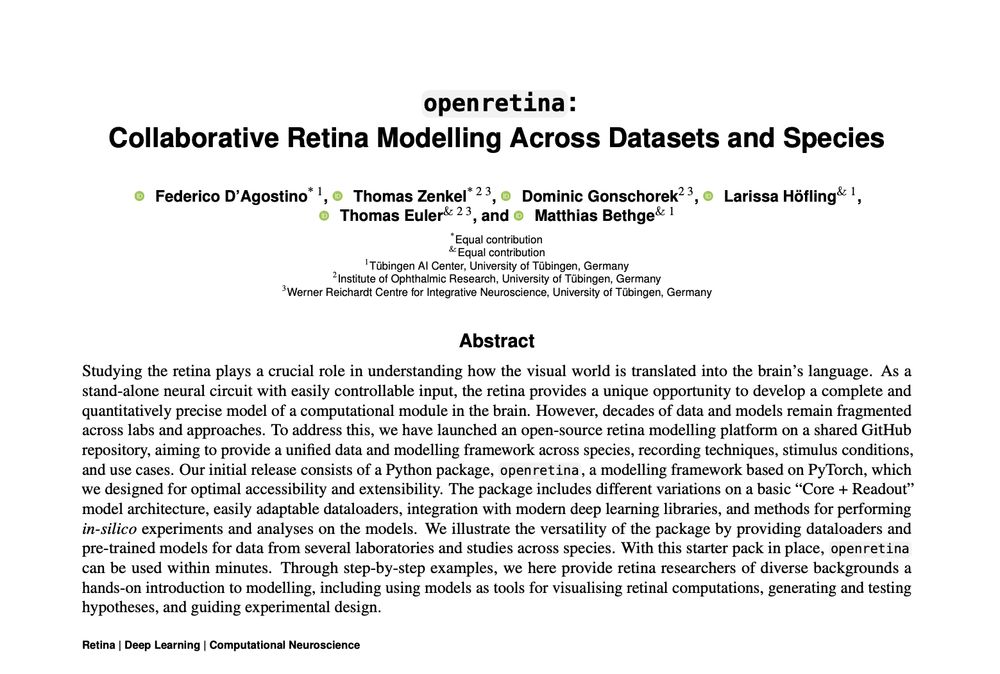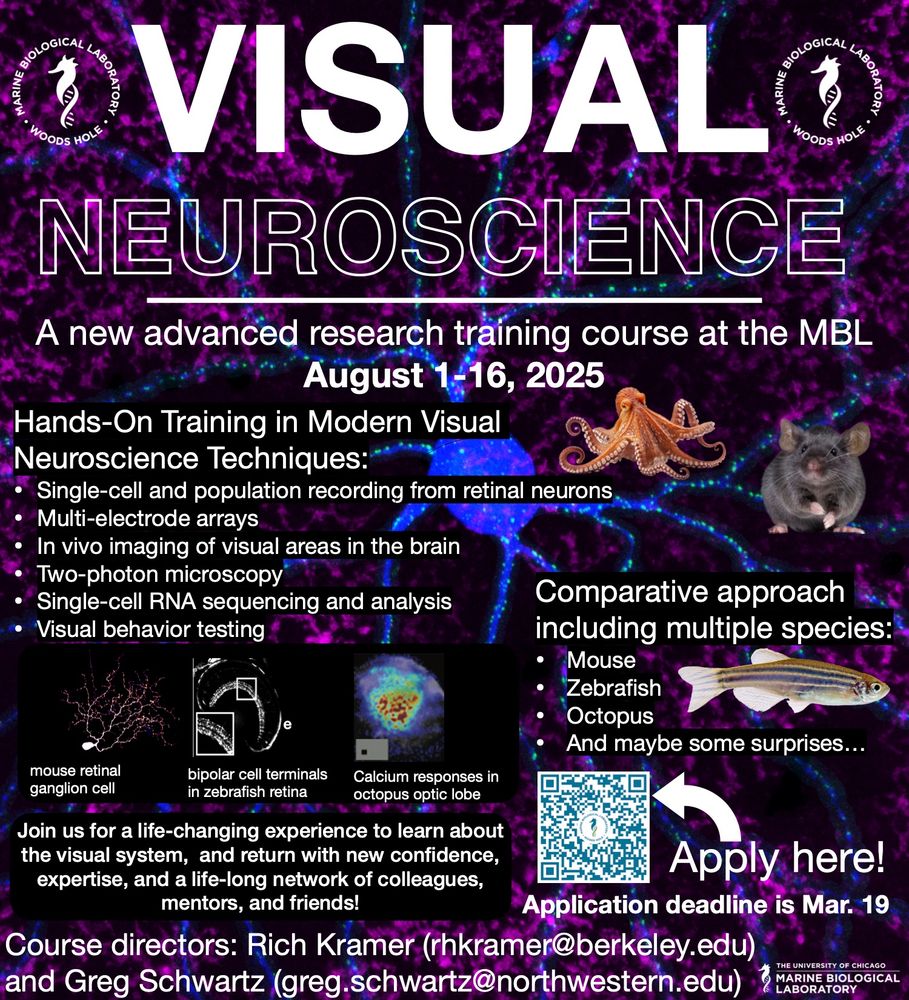
www.science.org/doi/10.1126/...

www.science.org/doi/10.1126/...
We found a preference for visual objects in the mouse spatial navigation system where they dynamically refine head-direction coding. In short, objects boost our inner compass! 🧭
www.science.org/doi/10.1126/...
🧵1/

We found a preference for visual objects in the mouse spatial navigation system where they dynamically refine head-direction coding. In short, objects boost our inner compass! 🧭
www.science.org/doi/10.1126/...
🧵1/


Together with Marcus Jeschke and Emilie Mace we are looking for a PhD student to join us for developing AI tools for optogenetic sensory restauration.
Apply now: sinzlab.org/positions/20...
#PhDposition #AI #Neuroprosthetics #ML #NeuroAI #Hiring
Together with Marcus Jeschke and Emilie Mace we are looking for a PhD student to join us for developing AI tools for optogenetic sensory restauration.
Apply now: sinzlab.org/positions/20...
#PhDposition #AI #Neuroprosthetics #ML #NeuroAI #Hiring
We’ve just launched openretina, an open-source framework for collaborative retina modeling across datasets and species.
A 🧵👇 (1/9)

We’ve just launched openretina, an open-source framework for collaborative retina modeling across datasets and species.
A 🧵👇 (1/9)
1/3

1/3
www.nature.com/articles/s41...
A thread

www.nature.com/articles/s41...
A thread

The project will combine retina recordings, computational modeling, and optogenetics to help further develop vision restoration therapy.
See here for more information:
retina.uni-goettingen.de/join-the-lab/

The project will combine retina recordings, computational modeling, and optogenetics to help further develop vision restoration therapy.
See here for more information:
retina.uni-goettingen.de/join-the-lab/

We are talking eyes, retinas, and some of the more ancestral bits of visual brains. No species restrictions. List is close to full, will start building Vol 2 before too long
Addition requests, please see link in the below thread
go.bsky.app/BotZr1g
We are talking eyes, retinas, and some of the more ancestral bits of visual brains. No species restrictions. List is close to full, will start building Vol 2 before too long
Addition requests, please see link in the below thread
go.bsky.app/BotZr1g
www.nature.com/articles/s41...

www.nature.com/articles/s41...

